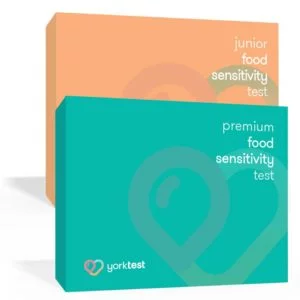- What are Salicylates?
- Natural vs Synthetic Salicylates
- Risk Factors and Causes of Salicylate Sensitivity
- Biological Mechanisms Behind Salicylate Sensitivity
- Genetic Factors Affecting Enzyme Activity
- Other Causes: Diet, Lifestyle, and Health Conditions
- Symptoms of Salicylate Sensitivity
- Digestive Symptoms
- Neurological Symptoms
- Anaphylactoid Reactions vs Anaphylactic Reactions
- Salicylate Allergy vs. Salicylate Intolerance
- The Fundamental Difference
- Symptoms: Identifying the Differences
- Severity Matters
- The Role of Sensitivity
- Salicylate-Containing Triggers to Avoid
- Foods High in Salicylates
- Medications Containing Salicylates
- Cosmetics With Salicylates
- Testing and Diagnosing Salicylate Sensitivity and Allergy
- Elimination Diet Test
- Blood Tests
- Skin Prick Testing (SPT)
- Salicylate Challenge Test
- How to Overcome Salicylate Sensitivity
- Adjusting Your Diet with Low-Salicylate Foods
- Taking Antihistamines
- Maintaining Gut Health
- Consulting a Dietitian
Identifying Salicylate Sensitivity: Symptoms, Causes, and Testing
Salicylates, which are salts or esters of salicylic acid, are naturally found in certain plants and are also used as food preservatives and antiseptics. They’re abundant in various foods, including different legumes, grains, fruits, vegetables, and spices. There are even studies that suggest a diet high in salicylate foods–which are naturally anti-inflammatory–can help reduce the risk of inflammatory diseases.[1]
However, in some people, these compounds produce an allergy-like reaction that can involve symptoms of asthma, skin issues, and intestinal inflammation. These problems are rooted in conditions referred to as salicylate sensitivity, also known as salicylate intolerance, where individuals experience adverse effects when consuming a usual amount of salicylate. In some cases, individuals can experience an IgE-mediated allergic response to salicylates, otherwise known as salicylate allergy.
While salicylate allergy and salicylate sensitivity each have different biological mechanisms, they both result in unpleasant and sometimes extreme symptoms that shouldn’t be overlooked.
What are Salicylates?
If you’ve ever taken aspirin, then you’ve interacted with salicylates. They’re a type of chemical naturally found in various plants as a defense mechanism against harmful insects, diseases, and bacteria. They have bacteriostatic, fungicidal, and keratolytic properties. The most famous member of the salicylate family is acetylsalicylic acid—better known as aspirin.
In addition to their medicinal use, these compounds also give many fruits and vegetables their vibrant colors. Some people may not realize they’re consuming them daily through foods like apples, tomatoes, or spices like turmeric and paprika. Yet, foods high in salicylate can be particularly problematic for individuals with sensitivities.
Natural vs Synthetic Salicylates
Salicylates can be categorized into two types: natural and synthetic. Natural salicylates come from plant sources while synthetic versions are created in labs for medications or preservatives.
Synthetic salicylates have wide-ranging uses. They act as blood thinners, reduce fever and pain, serve as food preservatives or flavorings, and even find usage in personal care products, like shampoos and lotions due to their antibacterial properties.
Plants naturally produce these compounds to effectively ward off insect attacks and disease threats, which allows them to thrive under adverse conditions. These protective qualities, however, do not always agree with human biology, especially for those sensitive to its effects. In turn, this can cause discomforting symptoms ranging from skin issues to digestive problems.
Risk Factors and Causes of Salicylate Sensitivity
The root cause of salicylate sensitivity lies in how our bodies process these compounds. When functioning normally, enzymes in our liver metabolize salicylates into substances that can be safely eliminated. But when this enzyme activity is reduced or impaired, it leads to an accumulation of unprocessed salicylates which may trigger adverse reactions.
Biological Mechanisms Behind Salicylate Sensitivity
Our bodies contain a class of enzymes called cyclooxygenase (COX) which are responsible for producing prostanoids – hormone-like substances involved in inflammatory and pain responses. Salicylates inhibit the action of these COX enzymes, leading to decreased production of prostanoids, and subsequently, reduced pain and inflammation.[2]
In most people, this results in the well-known anti-inflammatory effects associated with aspirin—a common form of salicylate. However, some individuals react differently due to genetic variations or other factors affecting their metabolic processes. Instead, they experience salicylate sensitivity symptoms like skin rashes, respiratory issues, or gastrointestinal discomfort upon exposure to foods or products containing salicylates.
Genetic Factors Affecting Enzyme Activity
A person’s ability to metabolize salicylates effectively can vary widely primarily because everyone’s genes are different. Research has shown that specific gene variants impact how we process certain drugs and chemicals including salicylates.
This suggests why some people develop sensitivity while others do not: their body lacks the necessary ‘machinery’ to break down and remove salicylates effectively. This can lead to an accumulation of the compound in their system, causing various symptoms.
Other Causes: Diet, Lifestyle, and Health Conditions
It’s not just genetics at play. Diet, lifestyle choices, and underlying health conditions can also contribute to salicylate sensitivity.
Asthma in particular can contribute to salicylate sensitivity due to the overproduction of leukotrienes, which are inflammatory mediators. Salicylate sensitivity is thought to be caused by an overproduction of leukotrienes, which is caused by the inhibition of cyclooxygenase (COX). This overproduction of leukotrienes can lead to symptoms related to salicylate intolerance, including allergic rhinitis, asthma-like symptoms, and anaphylaxis.[3]
As for diet, a consistently high intake of foods rich in these compounds can overload your body’s capacity to process them. This can lead to increased sensitivity and adverse reactions. Gut health plays a crucial role in determining how much salicylates are absorbed from our diet.
Symptoms of Salicylate Sensitivity
Salicylate sensitivity can manifest with a variety of symptoms, affecting different systems in the body. One scientific review of salicylate intolerance found the most common symptoms to include: [4]
- Nasal polyps
- Bronchial asthma
- Polyps with asthma
- Rhinitis
- Chronic intestinal inflammation
- Urticaria/Quincke edema
While asthma, rhinitis, and nasal polyps are frequently reported reactions, the complete list of potential symptoms is quite exhaustive. Below we touch on different forms of symptomatic responses.
Digestive Symptoms
In addition to skin-related issues and respiratory problems associated with both types of reactions mentioned above, digestive disturbances are another common symptom people sensitive to salicylates experience frequently. This could manifest as:
- Stomach discomfort
- Irritable bowel syndrome (IBS)
- Gassiness or excessive wind
- Nausea and vomiting
- Diarrhea
- Bloating
- Abdominal pain
- Urgency to urinate
- Constipation
Because such conditions are often linked to other triggers besides salicylates, it’s important to undergo proper testing and consult a healthcare professional for proper diagnosis.
Neurological Symptoms
Beyond the skin and digestive system, your nervous system may also bear the brunt of excessive intake of salicylates. While these symptoms can vary in severity, some of the most common neurological symptoms may include:
- Headaches and migraines
- Memory loss and poor concentration
- Hyperactivity
- Sleep issues
- Tic disorders
- Speech issues
- Depression and mood changes
- Dizziness and vertigo
Mood changes like anxiety or depression are largely due to increased levels of inflammation caused by an immune response against salicylates, which are more severe reactions.
Anaphylactoid Reactions vs Anaphylactic Reactions
Anaphylactic and anaphylactoid reactions are both immediate and potentially life-threatening reactions of salicylate sensitivity or allergy, but they differ in their underlying mechanisms. [5]
Anaphylactic reactions are immune-mediated type I allergic reactions that occur in response to an allergen. These reactions involve the release of mediators from mast cells and basophils as a result of an IgE-mediated immune response. The symptoms of anaphylaxis can include airway obstruction, generalized skin reactions, cardiovascular symptoms, and gastrointestinal symptoms. Anaphylaxis is an immediate response that occurs within minutes of being exposed to salicylate, however, a late-phase reaction hours after the initial reaction may also occur. Anaphylaxis can be triggered by both IgE and non-IgE-mediated factors.
On the other hand, anaphylactoid reactions produce the same clinical picture as anaphylaxis but are not IgE-mediated. They occur through a direct non-immune-mediated release of mediators from mast cells and/or basophils or result from direct complement activation. Anaphylactoid reactions are not allergic reactions because immunoglobulin E (IgE) does not cause them. Rather, the symptomatic response is triggered directly by the substance.
Salicylate sensitivity, like many food sensitivities, can be difficult to detect. Symptoms often overlap with other conditions making it hard to pinpoint without proper testing. Recognizing these symptoms is the first step toward finding relief.
Salicylate Allergy vs. Salicylate Intolerance
The symptoms of salicylates in food are commonly misinterpreted as allergies. However, if a natural substance triggers symptoms that do not involve the immune system, this reaction is not an allergy but is known as intolerance.
The Fundamental Difference
A salicylate allergy is a response from your body’s immune system to salicylates, characterized by an immunoglobulin E (IgE) response. The body sees these compounds as invaders and releases histamines causing symptoms that can range from mild itching to severe anaphylaxis.
In contrast, salicylate intolerance does not involve the immune system directly. Instead, it happens when your body lacks certain enzymes or has difficulty breaking down salicylates leading to unpleasant digestive symptoms.
Symptoms: Identifying the Differences
An allergic reaction tends to happen quickly after exposure whereas intolerance reactions can be delayed by hours or even days making them harder to spot. Allergies generally cause skin reactions, such as hives or eczema, while intolerances more commonly lead to gut-related issues, such as bloating or diarrhea. But, there’s a lot of overlap that can occur, so it’s best not to rely on symptoms alone for diagnosis.
Severity Matters
Allergic responses can sometimes trigger life-threatening conditions known as anaphylaxis. In rare cases where high doses of aspirin are ingested, non-allergic individuals might experience what appears similar, known as anaphylactoid reactions.
However, anaphylactoid reactions are not true allergic responses and don’t involve the immune system in the same way. They usually happen due to direct stimulation of certain cells (mast cells) which release histamines.
The Role of Sensitivity
Sensitivity is a broad term that often characterizes both allergies and intolerances. You might be considered ‘sensitive to salicylates’ without being allergic or intolerant. For example, you may react negatively to high levels of salicylates but can tolerate small amounts. But, if you’re not allergic to salicylates, then you’re likely to have an intolerance or sensitivity.
Salicylate-Containing Triggers to Avoid
Knowing how to dodge triggers high in salicylates can make living with sensitivity a bit easier. The key is understanding where these compounds hide, which includes certain foods, medications, and cosmetic products.
Foods High in Salicylates
Salicylates are common in many fruits, vegetables, and spices. But some have more than others. The salicylate content of a food can vary based on factors such as growing conditions, preparation, and level of ripeness.
Common foods high in salicylates include:
- Fruits: Apricots, oranges, tangerines, strawberries, blackberries, blueberries, cherries, cranberries, grapes, pineapples, plums, raisins, prunes, and guava.
- Vegetables: Broccoli, cucumbers, okra, chicory, endive, radishes, zucchini, watercress, alfalfa sprouts, eggplant, squash, sweet potato, spinach, artichokes, and broad beans.
- Nuts and seeds: Almonds, peanuts, pine nuts, macadamia nuts, pistachios, sesame seeds, sunflower seeds, and chia seeds.
- Spices: Some herbs and spices contain high amounts of salicylates, such as thyme, rosemary, curry powder, paprika, and garam masala.
If you love your fruit or spice kick but want to limit exposure to salicylates, peeling fruits before eating them might help as most of the compound resides on their skin. Also, consider choosing less ripe versions since they tend to contain fewer salicylates.
Medications Containing Salicylates
You may be surprised that this tricky compound lurks not just in foods but also in medications. Aspirin, for example, contains high levels of salicin, which our body converts into salicylic acid – another form of salicylate. So next time you reach for an aspirin, think twice if you’re sensitive.
Some common salicylate-containing medicines include:
- Aspirin (acetylsalicylic acid)
- Antacids (Pepto-Bismol, Alka-Seltzer)
- Bismuth subsalicylate
- Choline salicylate
- Diflunisal
- Magnesium salicylate
- Salsalate
These medications are used for various purposes, including pain relief, fever reduction, and anti-inflammatory effects. It’s important to note that salicylate-containing medications can cause adverse reactions in individuals with salicylate sensitivity. If you suspect that you may have salicylate sensitivity, it’s advisable to consult a healthcare professional for proper evaluation and management.
Cosmetics With Salicylates
Salicylates aren’t just hiding in your kitchen and medicine cabinet – they might be lurking on your bathroom shelf too. Salicylate derivatives such as methyl salicylate, sodium salicylate, and benzyl salicylate are also used in cosmetics and personal care products. These compounds can be found in various skincare and haircare products, including:
- Moisturizers
- Sunscreen
- Make-up
- Body washes
- Hair care products
- Toothpaste
- Mouthwash
- Fragrances
It’s important that individuals with salicylate sensitivity be mindful of certain cosmetics and personal care products containing salicylates to prevent adverse reactions. Read labels carefully and familiarize yourself with different salicylates that may be problematic.
Testing and Diagnosing Salicylate Sensitivity and Allergy
If you suspect that you may have salicylate sensitivity, testing and diagnosis are vital to validating your condition. Here are some of the most common ways to test for salicylate sensitivity or allergy.
Elimination Diet Test
A common first step in diagnosing salicylate sensitivity is an elimination diet test. This involves removing all sources of salicylates from your diet and then gradually reintroducing them to see if symptoms return.
While effective, this method can take time as it requires strict dietary control over several weeks and months. It’s important during this period not only to avoid high-salicylate foods but also medications or cosmetics containing these compounds. Given the nature of salicylates, it can be a difficult and sometimes ambiguous way to determine a sensitivity to salicylates, but it is an easily accessible option.
Blood Tests
While blood tests are typically an effective and convenient way to test food sensitivities and allergies, there are no specific blood tests that can conclusively diagnose salicylate sensitivity or allergy. However, this doesn’t mean food sensitivity tests don’t have a place in helping individuals understand particular sensitivities to these compounds.
For instance, YorkTest’s Premium Food Sensitivity Test covers a wide range of food and drink ingredients, including those high in salicylates. This home-to-laboratory test kit analyzes an individual’s IgG reactions to over 200 foods and drinks, providing a comprehensive assessment of an individual’s reactivity to various proteins. While the test doesn’t cover salicylates molecules, it can help individuals identify potential sensitivities or intolerances to salicylate-rich foods, which can be valuable information for making dietary adjustments to manage symptoms that may be associated with salicylate sensitivity.
Similarly, an allergen-specific immunoglobulin E (IgE) blood test can measure the levels of different IgE antibodies, which can help to diagnose and better manage food allergies. They can also be helpful for environmental allergy diagnosis in some cases. For example, if you have an allergy to strawberries, a high salicylate food, an IgE blood test that covers fruits like strawberries will recognize elevated IgE antibodies for this food if it has been consumed, thereby aiding in the diagnosis of the allergy.
Skin Prick Testing (SPT)
This is another testing method primarily used for detecting allergic responses, not intolerances. In a skin prick test, small amounts of suspected allergens are applied to the skin using a tiny lancet that just barely punctures the surface.
The test is read after 15-20 minutes. If you’re allergic to one or more of the substances tested, you’ll develop a raised bump or reaction on your skin at those sites within this time frame. Like blood tests, skin prick testing can’t confirm salicylate intolerance as it mainly detects allergy reactions to proteins. It also must be conducted in a clinical setting with a doctor or physician who’s qualified to carry out such testing procedures.
Salicylate Challenge Test
A salicylate challenge test is one of the most common diagnostic procedures used to determine if an individual is sensitive to salicylates. This test involves reducing the level of salicylates in the body by consuming foods with no or very low levels of salicylates. Once the body has eliminated the stored salicylates, foods containing higher levels are gradually reintroduced to assess the extent of any reaction. This test should be carried out under the supervision of a dietitian or doctor.
The salicylate challenge test may seem identical to the elimination diet. While these testing methods are related, they involve distinct procedures used to identify salicylate sensitivities. The salicylate challenge test specifically focuses on salicylate intolerance, while the elimination diet is a broader diagnostic procedure used to identify various food sensitivities, including salicylate intolerance.
How to Overcome Salicylate Sensitivity
If you’re grappling with salicylate sensitivity, don’t lose hope. There are ways to cope and continue living a fulfilling, symptom-free life. Gaining information and knowledge about your condition is key.
Adjusting Your Diet with Low-Salicylate Foods
Making necessary dietary changes is the most impactful solution to avoid triggering symptoms. While it’s important to avoid foods high in salicylates, there are ample foods that are very low in salicylates that can be safely consumed by people with sensitivity. Examples of low-salicylate foods include:
- Fruits: Bananas, pears (peeled), papayas, rhubarb, and apples (golden delicious variety).
- Vegetables: Carrots, pumpkin, onions, cabbage, and bamboo shoots.
- Proteins: Poultry, fish, eggs, beef, pork, and shellfish.
- Dairy: Butter, margarine, cream cheese, milk, yogurt, and rice milk.
- Grains: Millet, barley, wheat, and rice.
- Fats: Butter, margarine, cashews, poppy seeds, and vegetable oils.
It’s especially important to be mindful of certain spices or ingredients that may be hidden in certain dishes. Be diligent about reading ingredient lists on packaged foods and asking servers about meals if you’re unsure about whether they contain salicylates.
Taking Antihistamines
Taking antihistamines may help manage symptoms of salicylate sensitivity, as they can help alleviate some of the allergic reactions associated with salicylate exposure. They can help mitigate symptoms like nasal congestion, itching, skin rash, hives, and swelling, which are commonly associated with salicylate sensitivity.
It’s important to note that while antihistamines can help manage symptoms, they do not address the underlying cause of salicylate sensitivity. Additionally, the use of antihistamines should be discussed with a healthcare professional to ensure appropriate management of symptoms and potential interactions with other medications or health conditions.
Maintaining Gut Health
Maintaining gut health can potentially help manage salicylate sensitivity. Salicylate sensitivity can be associated with compromised gut health, and maintaining a healthy gut may reduce inflammatory conditions linked to salicylate sensitivity.
Addressing conditions like leaky gut is especially critical, as this can be an underlying issue for many dietary problems. A leaky gut involves serious disruptions to the microbiome that lead to increased gut permeability of the intestinal barrier, allowing foreign particles like salicylates to enter circulation and initiate an immune response.
Improving overall gut health may involve addressing microbial imbalances, optimizing sulfate metabolism, and healing a leaky gut to ensure the body’s ability to process and eliminate salicylates effectively.
Consulting a Dietitian
A registered dietitian can be a valuable ally for individuals who have a salicylate sensitivity or allergy. They can provide personalized dietary guidance, including creating a salicylate-restricted diet plan tailored to an individual’s specific needs and preferences.
A dietitian can help monitor the progress of a salicylate-restricted diet and provide ongoing support, ensuring that the individual’s nutritional needs are met. Removing or reducing certain fruits and vegetables from the diet due to salicylate sensitivity may lead to potential nutritional deficiencies. A dietitian can help prevent these deficiencies by recommending suitable alternatives and supplements.
Scientific References:
- Duthie GG, Wood AD. Natural salicylates: foods, functions and disease prevention. Food Funct. 2011 Sep;2(9):515-20. doi: 10.1039/c1fo10128e. Epub 2011 Aug 30. PMID: 21879102.
- Mitchell JA, Saunders M, Barnes PJ, Newton R, Belvisi MG. Sodium salicylate inhibits cyclo-oxygenase-2 activity independently of transcription factor (nuclear factor kappaB) activation: role of arachidonic acid. Mol Pharmacol. 1997 Jun;51(6):907-12. doi: 10.1124/mol.51.6.907. PMID: 9187256.
- Park SM, Park JS, Park HS, Park CS. Unraveling the genetic basis of aspirin hypersensitivity in asthma beyond arachidonate pathways. Allergy Asthma Immunol Res. 2013 Sep;5(5):258-76. doi: 10.4168/aair.2013.5.5.258. Epub 2013 May 27. PMID: 24003382; PMCID: PMC3756172.
- Baenkler HW. Salicylate intolerance: pathophysiology, clinical spectrum, diagnosis and treatment. Dtsch Arztebl Int. 2008 Feb;105(8):137-42. doi: 10.3238/arztebl.2008.0137. Epub 2008 Feb 22. PMID: 19633779; PMCID: PMC2696737.
- Luskin AT, Luskin SS. Anaphylaxis and Anaphylactoid Reactions: Diagnosis and Management. Am J Ther. 1996 Jul;3(7):515-520. doi: 10.1097/00045391-199607000-00007. PMID: 11862283.











